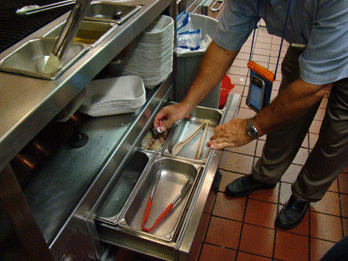Posting restaurant inspection scores is the right thing for health departments to do. It’s good for transparency of the regulatory system and it’s good for opening up dialogue with consumers (especially those who are interested in where their food is coming from). RIsk-based systems are the way to go, but with the shift comes the increasing need to communicate what risks have evidence behind them and which ones might just be gross.
Appearing in today’s Raleigh News & Observer is my take on recent coverage of risk-based inspections:
Regarding your March 7 editorial "Unappetizing," which warned of a "high yuck factor ahead":
Food safety is on the menu. And that’s a good thing. For restaurant patrons interested in a reality show-style tour of a restaurant’s hygiene practices, North Carolina’s grading system provides a needed sneak peek.
Estimates suggest up to 70 percent of foodborne illnesses are acquired outside the home. Every week there is at least one restaurant-related outbreak reported in the U.S. news media. Cross-contamination, lack of hand washing and improper cooking or holding temperatures are all common themes.
There are limitations to a grade system because an inspection reflects conditions only at one point in time; however, the information collected by inspectors, no matter how limited, needs to be accessible and clear.
North Carolina’s restaurant inspection system works not just because of posting grades, but also because of the regulators’ mandate to engage in a dialogue with restaurant operators and, more importantly, the public about food safety risks.
A grade should reflect how restaurant staff behaved while an inspector was present. The challenge is to motivate employees and managers to practice good food safety day-in-day-out, whether an inspector is present or not.
